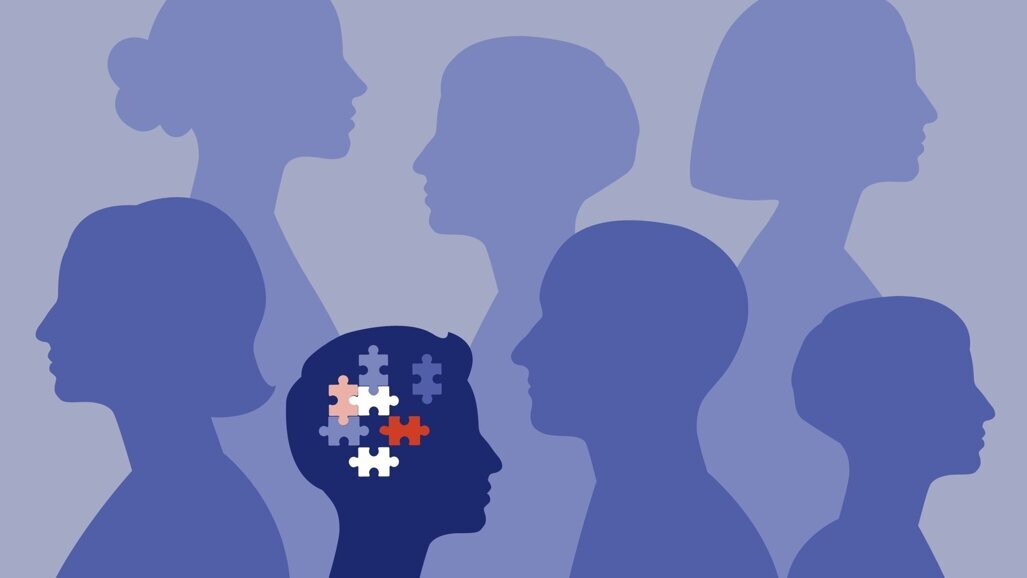LONDON, UK: A recent UK study has pointed to the need for education and awareness in dental teams to avoid diagnostic overshadowing—misattributing physical symptoms to mental health or pre-existing disabilities—in patients with learning disabilities and/or autism. The research highlighted self-injurious behaviour as an indicator of head and neck pain, emphasising the importance of recognising self-harm as a sign of physical or emotional distress. The study also addressed the communication and interoception difficulties these patients may face and reviewed tools for communication and pain assessment to promote optimal care for vulnerable patients.
Diagnostic overshadowing particularly affects individuals with learning and communication difficulties, since they may struggle to articulate or comprehend the symptoms they are experiencing. Similarly, patients with autism are at increased risk of diagnostic overshadowing, it possibly being more challenging for them to interpret their physical experiences. Owing to these expressive challenges, dental and other healthcare professionals might easily overlook these patients’ symptoms, resulting in inaccurate diagnosis and thus inappropriate care.
Lead author Dr Mona Yekezare, a clinical fellow in oral and maxillofacial surgery at the Royal London Hospital, part of Barts Health NHS Trust, told Dental Tribune International that the study emerged from in-depth discussions with her two co-authors, Dr Stacey Clough and Patricia Handley, a consultant in special care dentistry at Barts Health and lead nurse for learning disabilities, respectively, at Barts Health.
“Over the years, Dr Clough has encountered a number of patients with learning disabilities and communication difficulties whose self-injurious behaviours were linked to underlying pain in the head and neck region. Recognising the critical need to understand this connection, we decided to delve into the existing literature on the relationship between these self-injurious behaviours and the associated pathologies. We aimed to shed light on the critical need for appropriate diagnosis and intervention in such cases.”
Connection between self-injurious behaviour and pain
Previous studies in Research in Developmental Disabilities and the American Journal on Intellectual and Developmental Disabilities have investigated the potential link between pain and self-harm in patients with learning disabilities and/or autism. With the help of pain assessment tools, it was found that individuals who frequently presented with self-harming habits scored significantly higher in pain assessment. These results indicate that self-harm may be a response to pain that is not communicated by the patients nor easily understood by healthcare professionals.
Appropriate treatment shows decrease in self-injurious behaviour
In demonstration of how self-harm can be a sign of underlying pain in this vulnerable patient group, the researchers documented two clinical cases treated at the Royal London Hospital involving patients with a severe learning disability. Diagnosis and treatment of the underlying causes of their pain led to a decrease or elimination of self-injurious behaviour.
The research team emphasised that, while self-injurious habits may be a feature of some disabilities, it is the recognition of a change in pattern or frequency of behaviours which is key to avoiding diagnostic overshadowing. Furthermore, even though unidentified and untreated pain may lead to behavioural changes, these should not be misinterpreted as being a result of the patient’s disability.
When asked to provide some guidance for dental professionals who care for patients who may struggle to communicate their symptoms, Dr Yekezare replied: “The most crucial advice is to keep an open mind and avoid assuming that new behaviours are simply part of an underlying condition. Use pain assessment tools and techniques specifically designed to help distinguish new behaviours that may indicate distress or discomfort. Conduct thorough examinations and investigations to rule out physical causes of distress. Additionally, engage with caregivers and family members for insights into the patient’s behaviour. These steps can help provide compassionate and effective care for these patients.”
In addition, the study authors recommend the Distress and Discomfort Assessment Tool, which has been purposely designed to help identify distress cues in patients with limited communication abilities. The tool is structured to characterise an individual’s typical content cues, providing insights for the interpretation of distress indicators. More information about the tool can be found here.
Raising awareness among dental professionals
“Our article highlights that diagnostic overshadowing can contribute to health inequalities experienced by patients with learning disabilities and communication difficulties, including those with autism. By raising awareness among oral health professionals about this issue, we aim to equip them with the knowledge and tools to overcome it,” commented Dr Yekezare.
She added: “It’s crucial for practitioners to understand that new behaviours should not be dismissed as part of an underlying condition. Instead, these behaviours should prompt thorough investigations or referrals to specialist centres for comprehensive assessments and a multidisciplinary approach. This strategy ensures that patients receive the appropriate care and attention they need, ultimately reducing health disparities in the oral healthcare sector.”
As it is common for patients with learning disabilities or autism to initially seek care from their general dental practitioner, it is essential that dental teams are properly trained to avoid diagnostic overshadowing. According to the study authors, undergraduate training programmes should include awareness of diagnostic overshadowing to prepare new dental professionals with the knowledge and mindset necessary when interacting with this specific patient group.
Future code of practice in the making
According to the Health and Care Act 2022, providers registered with the Care Quality Commission have to ensure that all personnel receive training on learning disabilities and autism spectrum disorder. Following this, the government is required to issue a code of practice to guide compliance with this training requirement. Currently, the Oliver McGowan code of practice is under review to assess its compliance with legislative requirements.
The study, titled “Diagnostic overshadowing: Self-injurious behaviour as a manifestation of pain in the head and neck”, was published online on 14 June 2024 in the British Dental Journal.
Topics:
Tags:
AMSTERDAM, Netherlands: As part of its ongoing mission to make oral care more accessible to everybody, Oral-B has recently launched the Disability ...
LOS ANGELES, US: Dental visits can be a source of great stress for patients, especially those who have autism. In a recent study, researchers at the ...
RIYADH, Saudi Arabia: Every dental clinician in the world will, at some point, treat a patient with a form of mental disability, and according to recent ...
Live webinar
Wed. 14 January 2026
5:00 pm UTC (London)
Dr. Théo Laplane, Dr. Robert Gottlander DDS
Live webinar
Fri. 16 January 2026
5:00 pm UTC (London)
Live webinar
Mon. 19 January 2026
6:00 pm UTC (London)
Philipp Kopp, Michael Seeber
Live webinar
Thu. 22 January 2026
2:00 pm UTC (London)
Prof. Judith Jones D.D.S; M.P.H., Prof. Kakuhiro Fukai D.D.S., Ph.D, Dr. Bathsheba (Bethy) Turton
Live webinar
Thu. 22 January 2026
7:00 pm UTC (London)
Dr. Nicola M. Grande DDS, PhD
Live webinar
Wed. 28 January 2026
1:00 pm UTC (London)
Live webinar
Wed. 28 January 2026
4:00 pm UTC (London)
Prof. Dr. Jan-Frederik Güth



 Austria / Österreich
Austria / Österreich
 Bosnia and Herzegovina / Босна и Херцеговина
Bosnia and Herzegovina / Босна и Херцеговина
 Bulgaria / България
Bulgaria / България
 Croatia / Hrvatska
Croatia / Hrvatska
 Czech Republic & Slovakia / Česká republika & Slovensko
Czech Republic & Slovakia / Česká republika & Slovensko
 France / France
France / France
 Germany / Deutschland
Germany / Deutschland
 Greece / ΕΛΛΑΔΑ
Greece / ΕΛΛΑΔΑ
 Hungary / Hungary
Hungary / Hungary
 Italy / Italia
Italy / Italia
 Netherlands / Nederland
Netherlands / Nederland
 Nordic / Nordic
Nordic / Nordic
 Poland / Polska
Poland / Polska
 Portugal / Portugal
Portugal / Portugal
 Romania & Moldova / România & Moldova
Romania & Moldova / România & Moldova
 Slovenia / Slovenija
Slovenia / Slovenija
 Serbia & Montenegro / Србија и Црна Гора
Serbia & Montenegro / Србија и Црна Гора
 Spain / España
Spain / España
 Switzerland / Schweiz
Switzerland / Schweiz
 Turkey / Türkiye
Turkey / Türkiye
 UK & Ireland / UK & Ireland
UK & Ireland / UK & Ireland
 International / International
International / International
 Brazil / Brasil
Brazil / Brasil
 Canada / Canada
Canada / Canada
 Latin America / Latinoamérica
Latin America / Latinoamérica
 USA / USA
USA / USA
 China / 中国
China / 中国
 India / भारत गणराज्य
India / भारत गणराज्य
 Pakistan / Pākistān
Pakistan / Pākistān
 Vietnam / Việt Nam
Vietnam / Việt Nam
 ASEAN / ASEAN
ASEAN / ASEAN
 Israel / מְדִינַת יִשְׂרָאֵל
Israel / מְדִינַת יִשְׂרָאֵל
 Algeria, Morocco & Tunisia / الجزائر والمغرب وتونس
Algeria, Morocco & Tunisia / الجزائر والمغرب وتونس
 Middle East / Middle East
Middle East / Middle East















































To post a reply please login or register